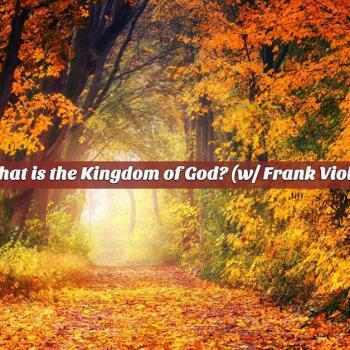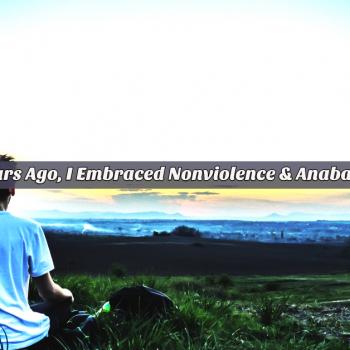The REM song from the late 80’s should be on any 2012 playlist. In the past year, “It’s the end of the world as we know it” could serve as a theme song. The Mayan calendar tells us that something cataclysmic will take place before we have the chance to replace our calendars. Add to this the rapture hysteria of the folks loyal to Harold Camping last year. He predicted that the “end of the world” would happen in two phases.
First, May 21st would usher in the rapture of the church away from the cosmos and then the final judgment – the annihilation of all unrepentant humanity and creation on October 21st. Both days came and went and if you’re reading this magazine blog, you probably didn’t get obliterated.
Why is there an obsession in popular culture and in certain sects of Christianity with the “end of the world?” When I think of the REM song, my mind immediately goes to the movie “Independence Day” featuring Will Smith. Although the end to come in that film had to do with aliens and not God, countless movies take on fanciful apocalyptic themes.
Many Christians share a similar fascination. Maybe these Jesus followers don’t agree with people like Harold Camping, but they often hold to a similar theology: when Christ returns, believers will be taken to heaven and the earth will be destroyed. This, certainly, represents the view bequeathed to me in my upbringing in Evangelicalism. A main text to support this view is found in Mark 13, where Jesus uses “apocalyptic” language to describe the destruction of Jerusalem (70AD).
Consider the following analogy for understanding apocalyptic language. N.T. Wright invites us to ask: What if we compare Jesus saying, “the sun will be darkened” or that “stars will fall from the sky,” with our exaggerative language of “earth shattering” event? Think about the most “earth shattering” event of our generation in North America: 9/11.
Suppose you read a news article with that sort of language in it. You wouldn’t assume that an earthquake caused the Twin Towers to collapse. You would understand the exaggerated metaphor. The same understanding may not be true of someone who, two thousand years in the future, reads the exact copy of that article. Such a person might think that a literal earthquake “shattered” the World Trade Center, causing a new political situation to emerge. Of course, they would be misinformed.[1]
The same is true for us as we read “doomsday” texts in the Bible. In fact, whenever that sort of language is used in the Old Testament, it almost always refers to a major event that had political or social ramifications. For instance, Isaiah uses cosmic language to describe political events such as: Babylon’s conquering and the eventual fall of Edom. These are realities that have already been fulfilled in history. Jesus borrows this sort of Old Testament rhetoric to explain the coming doom of Jerusalem – something that happened in 70 AD.[2]
We still ought to believe in the Second Coming – that’s our hope! It’s a hope that needs to be reframed, not around God’s eventual destruction of the earth, but in God’s redemption and healing of all creation. In this way, REM’s lyric is partly right – when Christ returns it will be the “end of the world as we know it.”
Revelation 21-22 tells us that that this world will be renewed (Greek for “new” means “renew” not “brand new”): suffering and death will cease, God’s presence known intimately, evil and violence will end, and the curse of Eden will be lifted. Romans 8 says that the groaning creation will be “liberated from its bondage to decay” and will experience the same fate as God’s children.
The whole of the New Testament teaches that heaven will mysteriously join this planet and God’s restorative, healing justice will reign forevermore. The church’s invitation is to live in light of that hope-filled vision, existing as though God’s future world has already begun. Every time we bring – healing in the midst of suffering, the loving message of God, justice to the oppressed, peace instead of a sword, or creation care – we live as signposts pointing toward the opposite of “doomsday;” God’s bringing of heaven to earth.
****This article originally appeared in Converge Magazine, Issue 6 (MAR-APR 2012).












